
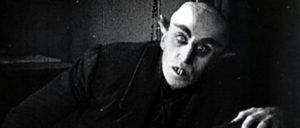
Few monster myths have been as highly romanticized as the vampire. The seductive and alluring night creature with which we are familiar, however, is a more modern incarnation of the beast, conceived at a retreat on Lake Geneva, Switzerland. There Percy Shelley, his then-lover Mary Goodwin, Lord “mad, bad and dangerous to know” Byron, and John Polidori, enjoyed much laudanum and creative inspiration. The vacation spawned Mary Shelley’s Frankenstein, some of Byron’s most laudable poems, and a small and barely known book called Vampyre, written by Polidori. Polidori modelled his bloodsucker off of Lord Byron, and is the first book in which the vampire resembles the more modern version to which we are accustomed. It was ultimately the inspiration for Bram Stoker’s Dracula. While Vampyre was written first, Dracula became much more well known, and is widely thought of as the first modern vampire novel. That said, while Dracula is an undead former Romanian warlord, complete with proper British clothing and a ton of money, he is still a terrifying character. His seduction is insidious and brutal, a callback to a more superstitious and dark era of history.
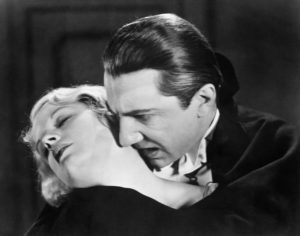
Dracula is an unabashedly gory and blatantly erotic book. Considering it was published in the year 1897 , it is almost inconceivable that such a story would be told. However, Stoker and his group of progressive writer friends balked at Victorian prudishness and proprieties. Ironically, late in his life, Stoker wrote an essay decrying eroticism in literature. Many hypothesize that he had gone senile, while others believe that as he aged, he may have truly regretted his former free-thinking ways. Regardless, Dracula remains a staple for lovers of horror and literature in general.
So what came before the modern myth? Most cultures have some form of vampire lore, and the creatures are more monster than man, more fiendish than human. An element of seduction remains in many myths, however, vampire-like creatures often being beautiful seductresses who lure their prey. After doing some research, a few vampire tales stood out as particularly interesting.
Madagascar, The Ramanga: The myth of the Ramanga evolved from a race of servants that were said to lick the wounds of their masters, should the masters be wounded or return from war. Yep. Ew.

Malaysia/Indonisia: The Matianak or Pontianak: These creatures are believed to be the undead spirits of women who died in childbirth. They live in banana trees and hunt young men as victims. They eat the organs of their prey, but do so for their own survival, similar to a vampire’s need for blood. Why they live in banana trees, I do not know.
Malaysian culture also includes and entity called a Penanggalan, a woman (often a midwife) who used black magic to gain her beauty. They smell like vinegar (explained in varying accounts for various reasons) and prey upon the weak, such as women in labor. The Penanggalan slides an invisible tongue into the home of her prey and drinks the blood from the birth, causing the new mother to waste away and die. Ew again.
Guadeloupe and Trinidad, The Soucouyant: The Soucouyant takes the form of an old woman by day and a fire ball by night. The fire ball my enter anywhere, and drinks the blood of its victims. If the victim dies, he or she will also become a Soucouyant.

Greece, Vrykolakas: The Vrykolakas are undead creatures, usually due to having lived a sinful life. They commit all sorts of random acts of terror, but most notably wander through villages knocking on doors. If the resident answers, they will soon die, leading to a Greek superstition never to answer a door until the second knock. In order to kill a Vrykolakas, one must typically behead, dismember or impale the beast.
Japan, The Nukekubi: The Nukekubi appear as normal humans during the day, but at night detach at the neck, after which their body and head go in search of prey to bite. If their heads and bodies are not reunited by sunrise however, the Nukekubi will perish.
While these myths seem disparate in many ways, the idea that the monster is undead, preys on human blood or flesh, and changes forms, seem to be prevalent in many cultures. They are a far cry from Edward Cullen, and rightly so. They are the real monsters, the dark imaginings of the human mind throughout history and across continents.
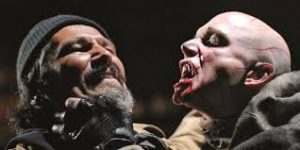
The real origin of the vampire myth, most likely comes from within the human subconscious and experience. Nature is filled with creatures that feed off the blood of others. Humanity is filled with humans that suck the life out of everyone they know. Yes, we all know them. Also, many of the various vampire creatures seem to have the ability to shift form from man/woman to beast. Perhaps the vampire is an incarnation of the duality of man – both our fear of, and attraction to, the darker side of things. These truths exist in every civilization, and have manifested themselves in a world of rich and morbid folklore. Thanks to mosquitoes and annoying neighbors, we have a myriad of bloody tales to enjoy, told through the lenses of countless cultures.
Philosophizing aside, this article concludes with The Sexiest Vampire Not Alive Award. *makes awkward joke* *fiddles with envelope* And the SVNA Award goes to….Tom Hiddleston in Only Lovers Left Alive. Sigh.
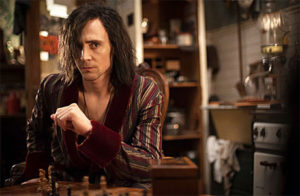
Happy Halloween 2016!

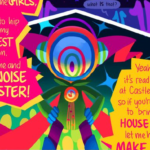
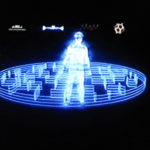
![[GIVEAWAY] RETURN TO WESTEROS WITH GAME OF THRONES: SEASON 8 DIGITAL CODE](https://geekd-out.com/wp-content/uploads/2019/05/MV5BMTc1YzBlYmMtZjcyMy00NmRiLWE2YTUtODQzMjQxMWMyY2E3XkEyXkFqcGdeQXVyMjIyMTc0ODQ@._V1_SX1777_CR001777999_AL_-150x150.jpg)